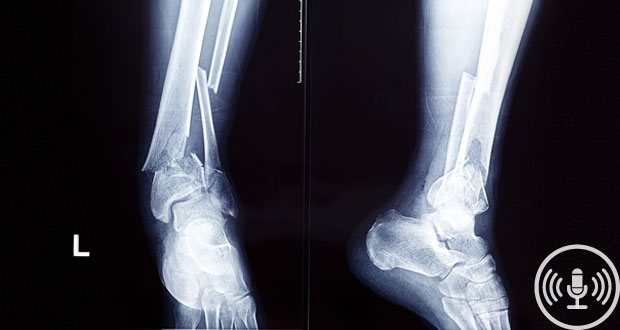The cost of older Australians’ brittle bones is rising. A new burden of disease report has revealed the total costs of osteoporosis and osteopenia in people over 50 years of age will be $3.1 billion in 2017.
The Osteoporosis Australia report also holds that the total direct cost of fractures over the 10 years from 2013-2022 will climb to $21.9 billion.
Dr Greg Lyubomirsky, chief executive of Osteoporosis Australia, urged health professionals to treat osteoporosis and fracture as a major priority.
Lyubomirsky said while fractures are an important cause of death in older people and require the same focus and attention as heart attacks and stroke, too many fracture patients are leaving hospital without appropriate investigation for osteoporosis. “It is our collective responsibility to stop osteoporotic fractures from occurring,” Lyubomirsky said. “We must do better.”
Osteoporosis Australia medical director professor Peter Ebeling said Australia’s hospitals are becoming revolving doors for fracture patients, with people being sent home and returning with new fractures, rather than being properly assessed and treated for osteoporosis.
“What is extremely worrying is that four-out-of-five Australians treated for an osteoporotic fracture are not tested for osteoporosis and, therefore, are not offered treatment for osteoporosis,” Ebeling said. “A broken bone is usually a sign that we need to take action to prevent more bone loss, as each fracture significantly raises the risk of a further fracture.”
The release of the Osteoporosis Burden of Disease reports coincides with the launch of the independent SOS Fracture Alliance, which unites 30 medical, allied health, patient and consumer organisations to focus on the prevention of osteoporotic fractures.
Professor Markus Seibel, founder and chair of the SOS Fracture Alliance, said the SOS Fracture Alliance strongly advocates the implementation of routine services that identify, investigate and treat patients with osteoporotic fractures. "These secondary fracture prevention services will integrate all sectors of the health system, in particular, primary care and hospital-based services.”
Do you have an idea for a story?Email [email protected]
 Aged Care Insite Australia's number one aged care news source
Aged Care Insite Australia's number one aged care news source

